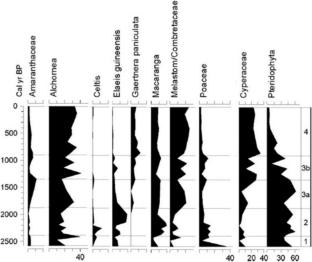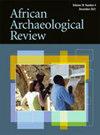The Sangha River Interval, Its Earliest Village Settlements, and the Bantu-Speakers’ Expansion During the Late Holocene (Cameroon, Central African Republic, Congo Republic)
Abstract
A broad agreement exists that towards the end of the Holocene in Central Africa there was a drier climatic episode called the “Late Holocene Forest Crisis” (LHFC) that impacted the Central African rainforest, its peak lying between c. 2500 and 2000 cal yr BP. The Sangha River Interval or SRI is such a hypothesized rainforest biome where savannas were understood to have developed. This climate-driven LHFC has been thought to have benefited the first village communities, migrating from Cameroon towards the south before 3000 cal yr BP. We review for the first time all the pertinent and extant data relating to the paleoenvironment and archaeology of this region from the last 3000 years. We conclude the SRI was more limited in extension than previously thought, that tropical forests were maintained within it throughout the period, and lastly, that the earliest pottery-using settlements are dated from c. 2200 cal yr BP. Thus, the SRI probably did not play a role in the expansion of the first village communities because when the Interval was initially settled, villagers had already reached the Congo River near the border to Angola some 800 km away to the south passing through coastal forests and savannas and the inland forests, bypassing the SRI.


 求助内容:
求助内容: 应助结果提醒方式:
应助结果提醒方式:


